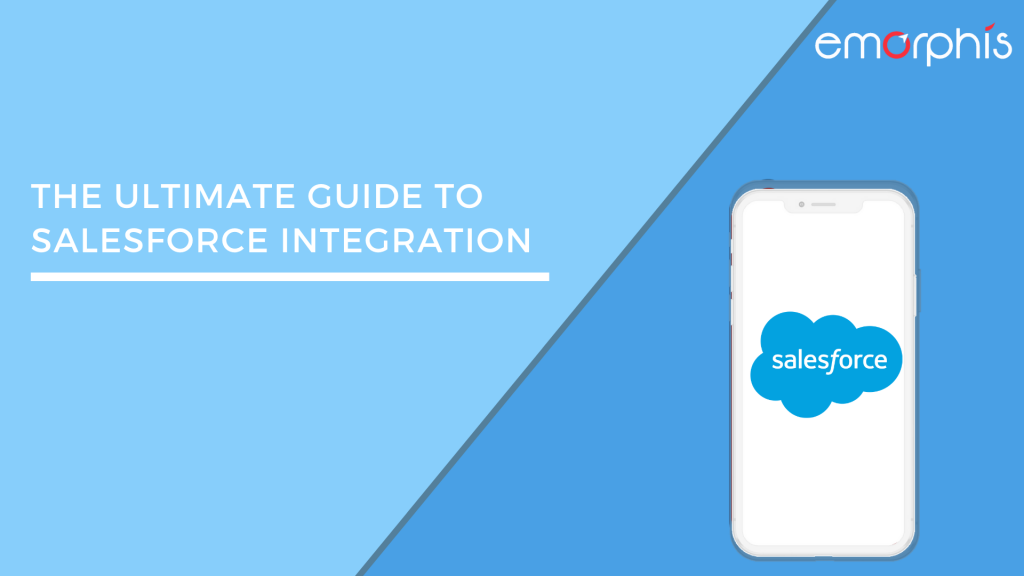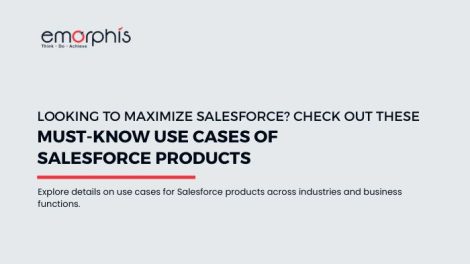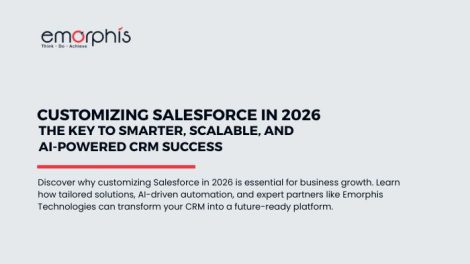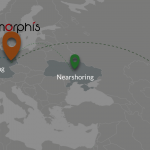Introduction
Salesforce is highly regarded as a powerful information platform that has revolutionized the business industry since the dawn of this millennium. As an effective CRM solution, it has improvised the sales operation of enterprises and offers innovative products and services to satisfy their customers’ needs.
By integrating Salesforce with other applications, organizations can now tap to vast unknown resources and provide them with much greater operational visibility. The following guide will offer a wealth of insights into the mesmerizing world of Salesforce Integration.
What are the processes associated with Salesforce Integration?
Do you want to make Salesforce better? Then connect it with other tools to enhance your productivity and bring significant improvement in your marketing strategies so to successfully run your business.
A Salesforce integration process helps to understand your business goals, so create a full-proof plan and provide training to your team to make your Salesforce integration services more impactful. The given study will highlight two processes associated with the given CRM model.
A. App-Based Salesforce Integration
Most of the salesforce consulting companies across the globe use Salesforce to manage data, nurture leads and provide effective customer service. Furthermore, various 3rd party apps are integrated with Salesforce to streamline the CRM with business applications and reduce the duplication of data.
For effective Salesforce integration with apps, a business will need a strong and smooth integration platform to help your business stand among crowds. Some notable app-based Salesforce integration includes:
- Salesforce Integration with Dell-Boomi

Source: boomi
Salesforce integration implies switching to the given platform from another CRM which also involved the migration of data. With Dell-Boomi, integrating with other applications to automate business procedures is a successful one.
It comes with Salesforce Connect which provides an insight into data to the users to view and search data that is stored outside the customer’s Salesforce. It comes with several benefits such as:
- Reduction in Salesforce data storage cost
- Allow users to access information to manage external data
- Salesforce Integration with Informatica

Source: [https://www.informatica.com/products/cloud-integration/connectivity/salesforce-connector.html#fbid=u-ptQKHsjHb]
Salesforce is the central part of any business and if you want to identify its true potential; then integrate it across all the systems to allow users to access genuine information as per their requirements.
Informatica Cloud is a data integration platform working as Software as a Service (SaaS). It performs integration of the cloud-based data with an on-premise database and delivers secure, trusted and accessible data to accelerate your business-related decisions. Its benefits are:
- Easy connection to on-premises & cloud-based apps
- Improves productivity & performance of the app
Furthermore, other 3rd party apps help in effective Salesforce integration, notable of them includes Jitterbit (cheapest app) & Zapier (specifically for Salesforce integration).
B. Code-based Salesforce Integration
Besides apps, integration of Salesforce can also be done by using a programming language. One notable example is Apex which is a proprietary programming language that has Java-like syntax and acts like database stored procedures. It comes with numerous benefits such as:
- Easy to use & test
- Offers built-in support to Lightning Platform
- Hosted on Lightning Platform and entirely controlled by it
- Applicable in different versions of API
Possible ways to Integrate with Salesforce
Most of the integration occurs on enterprise-level applications that cater to different layers such as Data, Business Logic, and User Interface to provide a greater level of quality, operational efficiency, and consistency to the users.
A. User Interface Integration
A great way to permit users to enter multiple apps from a single platform. One such example is the Facebook app where the content is posted from several application vendors.
B. Business Logic Integration
It utilizes Apex web services for Inbound and Apex Callouts for Outbound to handle business logic across multiple applications and accomplish the end-to-end business process.
C. Data Integration
It handles data synchronization needs using SOAP and REST APIs to allow single application in an enterprise to act as a major source of the specific business object. There is no need for coding, but it cannot implement any custom logic.
Need to Know About Salesforce Integration Checklist
It is an important tool to help you manage and plane any of your Salesforce integration services most accurately.
A. Planning & Documentation
Salesforce integration starts with the involvement of the people associated with it. So, proper planning and documentation of the given project are required to find out the further insight of business needs and technical requirements for the given project. It should include:
- Identification of Business Goals
- Formulating mission & vision of your business
- Identifying the owner & data involved in the application
- Understanding the integration standards & best practices
B. The Apps
The application occupies the central position of any integration project and is essential for the successful accomplishment of the given work. You should give some time to understand the integrated apps and how they integrate. It must include:
- Preparation of the data involved
- Understanding the dependency of each application involved
- Two devices have the same architecture
- API’s should be enabled of both going to be integrated apps
- Give serious consideration to API limits
C. The Processes
Processes define the flow of data from one endpoint to another which helps in staging and modifying data before their transmission to other applications. You should map out data flow across the organization through:
- Identifying the endpoints
- Provision of effective connection for custom integration & 3rd party integration tool
- Determination of performance of data delivery for various application
- Usage of IP Whitelisting for limiting & controlling access only to trusted users
Types of Salesforce Integration
Salesforce is the most versatile tool which offers ample ways to integrate data. Currently, few important salesforce integrations are mostly used.
A. Batch Integration
The most common method of data integration which is suitable for less frequently changing data. It is the easiest way to implement and provide an excellent solution for processing flat files.
B. Real-Time Integration
Real-time integration is a good match to align sales and marketing successfully. It is more adequate and less challenging to handle errors and control queues.
C. AppExchange
There are numerous apps available in Salesforce which can be immediately installed in the Salesforce environment. They are essential in reducing time and money in proper integration and supports future enhancements.
D. Real-Time Mashups
It needs building-up of the user interface in Visualforce to create customized UIs. They are frequently used for assessing data from external systems swiftly.
Some Exciting Salesforce Integration Patterns
To garner significant success in a business, one must utilize effective Salesforce integration to make it a valuable tool to enhance high productivity. Many organizations have started to implement it to boost their business fortune.
Salesforce integration structure is based on the following pattern:
Applications (A) to Applications (B) – Object(s) – Pattern
There is five most common integration pattern which is defined as follows:
A. Migration Pattern
It is one-to-one data migration from 3rd party apps to Salesforce that create reusable services to save a great amount of time for the development teams. It also plays an effective role in success of various Salesforce integration use cases such as:
- Data migration from legacy system to Salesforce
- Consolidation of CRM systems
- Backing up a customer master dataset
The most important aspect of a given pattern is that it helps in keeping enterprise data immune from tools that create it and thus allow it to be reused for multiple systems.
B. Broadcast Pattern
In the given Salesforce Integration pattern, one-to-many data migration occurs between a single-source system to multiple destination systems on a real-time basis. It is transactional and optimized for keeping up-to-date date for multiple systems. It is essential for use-cases like:
- Synchronization of real-time date from Siebel to Salesforce
- Creation of sales order in SAP in Salesforce
The exciting feature of the given pattern is that it permits the immediate transfer of customer data between multiple systems for fulfilling processing orders.
C. Aggregation Pattern
It is a many-to-one data migration pattern that allows the process and extraction of data from multiple systems and merging them into a single application. It will make data to remain up-to-date and avoid replication to produce the desired database. Its key factors include:
- Collecting & Formatting Data
- Finding the scope of source & insert data
- Merging multiple datasets
D. Bi-Directional Sync Pattern
The given Salesforce integration pattern merge multiple datasets in multiple systems and make them behave as one system to allow recognition of the presence of different databases. It comes with specific use-cases such as:
- Integration of Salesforce with multiple systems
- Streamlining quote for synchronizing all data records
It enables the system to optimally perform without affecting data integrity across two synchronized systems. It is beneficial for consistent and comprehensive data representation.
E. Correlation Pattern
It is similar to the bi-directional sync integration but with one exception. It singles out intersecting two data sets and does bi-directional synchronization only if the given item is naturally occurring in the system.
It is beneficial in cases where two systems want to share data for which they have real records representing the same contact precisely.
What Are the Things to Consider Before a Salesforce Integration Project?
For many organizations, integrating their apps with Salesforce is given high priority for achieving faster results with great productivity. As per some industry experts, there are some notable recommendations for effective Salesforce integration services:
- Identification of involvement of integration type: Real-time or batch
- Reviewing of API limits which shouldn’t exceed 1 lac API calls/day
- Knowing about information need to be moved between system
- Assuring authentication of the system
- Reconsider design if using Apex to solve middleware issues
- Creation of custom API to call third-party APIs for additional data
- Understanding when to move data to Salesforce
- Should know about configuration options
- Understanding of performing integration on enterprise and unlimited data only
These are the most important consideration, but a successful integration depends on its objectives and individual system.
What are the mistakes that will cause a salesforce integration project to Fail?
If there is a transmission of clean and accurate data, then only integration of your project with Salesforce data will be rendered successful. There are few mistakes associated with the given data integration which you must avoid and ensure the success rate of your project.
- Starting a project with no clear scope
- Propagation of bad data
- Failure to document systems of record
- Utilisation of bad coding pattern
- Exceeding API limits
- Ignoring data rate limits
- Implementation of improper system architecture
- Misinterpreting real-time integration
How to Integrate Salesforce with External Systems?
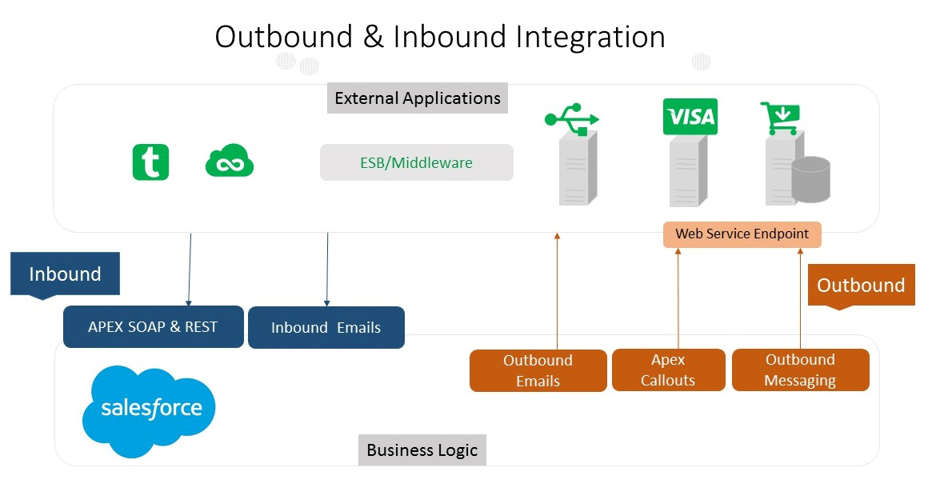
One of the drawbacks of Salesforce integration is that there is no inbuilt option for connection Salesforce solution to an external database. However, the given flaw can be resolved by applying two effective solutions:
A. Salesforce Integration using Data Loader
Data loader is a prebuilt system that is utilized to insert data into Salesforce objects or extract data from database objects to transform them into the desired goal. Besides, it is also utilized for mass deletion using ID fields of information effectively. As it requires Force.com API, there should be permission for utilizing APIs.
B. Salesforce Integration using Database Integration Service
An innovative web service that makes the connection of Salesforce to the external system much easier. Instead of working on SalesForce.com, it works on the principle of Apex callouts which stimulate your backend data and make data retrieving calls using apex perfectly. It is performed using two ways:
- Data can be imported directly using WSDL facility
- Service call messages can be created using HTTP RESTful apex classes
What are the benefits associated with Integration with Salesforce?

Integrating Salesforce with other systems comes with numerous benefits:
- Offers all-in-one access to allow employees to avoid switching systems, and stay logged to a single system to accomplish their work
- Enhance productivity by integrating the system with automation to remove duplication of data
- Gather information from a single data source which will be beneficial for the management
- Boost communication by integrating two systems and leads to more information sharing
- Automates workflows with no requirement of any code
- Offers effortless access to data from all integrated systems
So, if you are integrating your system with Salesforce, be assured to get a quick investment return with lower implementation costs.
Which is the best Salesforce integration Use-Case?
Salesforce integration has become a hot topic among businesses across the globe. With Salesforce integration with an ERP system, the business operation has become smooth and raised the satisfaction level among the customers.
What’s more, it has enabled the sales team to get access to customers’ data to avoid disruptions and delays. When both systems are integrated, several business challenges are resolved, and new opportunities are opened for the management team.

Below there is an outline of top-most use-cases of Salesforce integration with ERP:
A. Account & Content Information
Here, Customers’ information is stored both in ERP and Salesforce system that is essential to reduce the occurrence of inconsistent customer profiles. Furthermore, it also eliminates the need for entering data separately into different platforms.
B. Invoice & Payment History
It contains decisions regarding the provision of discounts and recollecting debts by the creation of an invoice or reflection of new customer payment on the ERP system proactively.
C. Quote & Order Management
It is important for turning proposals into actual orders by integrating both the systems wisely. Besides, it also helps the sales reps and customer service specialists to inform their customers about any changes in time.
D. Product & Price Books
It is a handy feature arising from the integration of two great systems. It is because of its capability to update your product and price list in ERP into Salesforce with great ease.
One question arises in mind that why it is important? It is essential due to the following benefits:
- Improve customer service by dealing with them in the swift mode
- Increase the visibility of data to a higher level with high accuracy
- Helps sales and customer service teams to make smarter and faster decisions
- Automate data management tasks
Putting it Together
The given article has correctly demonstrated that Salesforce integration has resulted in improving the efficiency and productivity of various businesses across the globe. With its exclusive features and patterns, the organizations have been able to integrate their services with the external system proactively.
Are you yearning for a simple yet robust Salesforce integration system to enhance your business fortune? Then take the help of our successful Salesforce Integration Services and get the best result for your business in a quick time.



